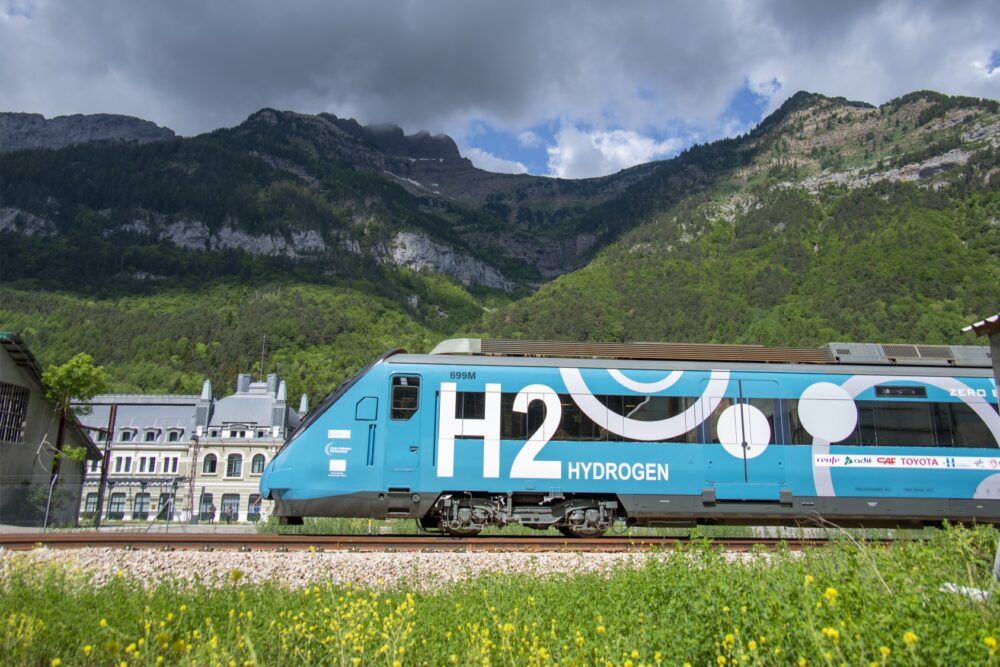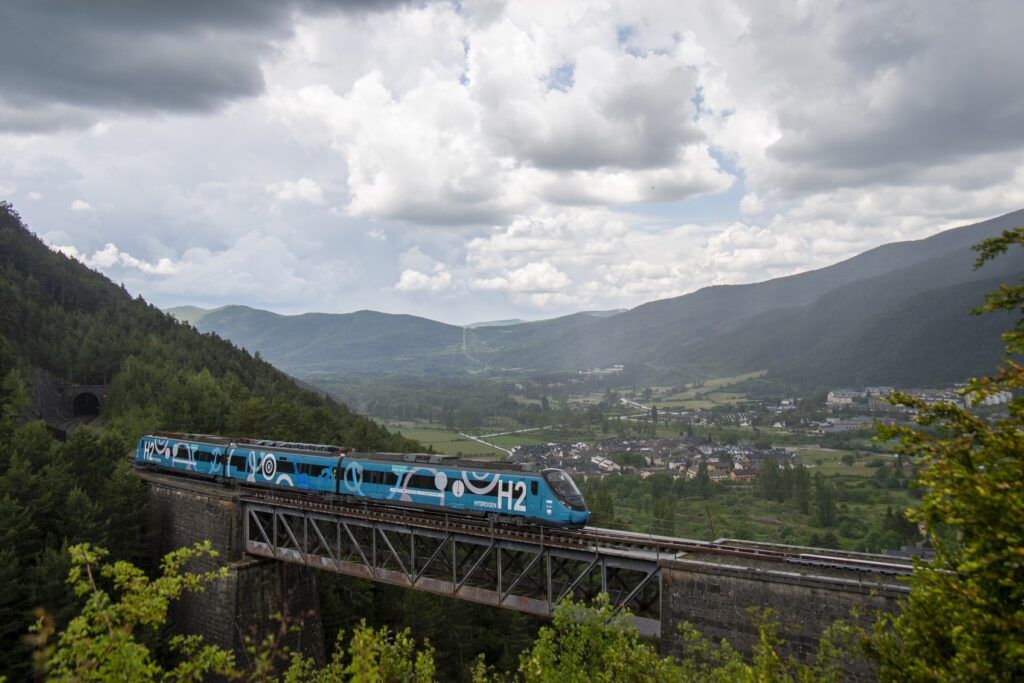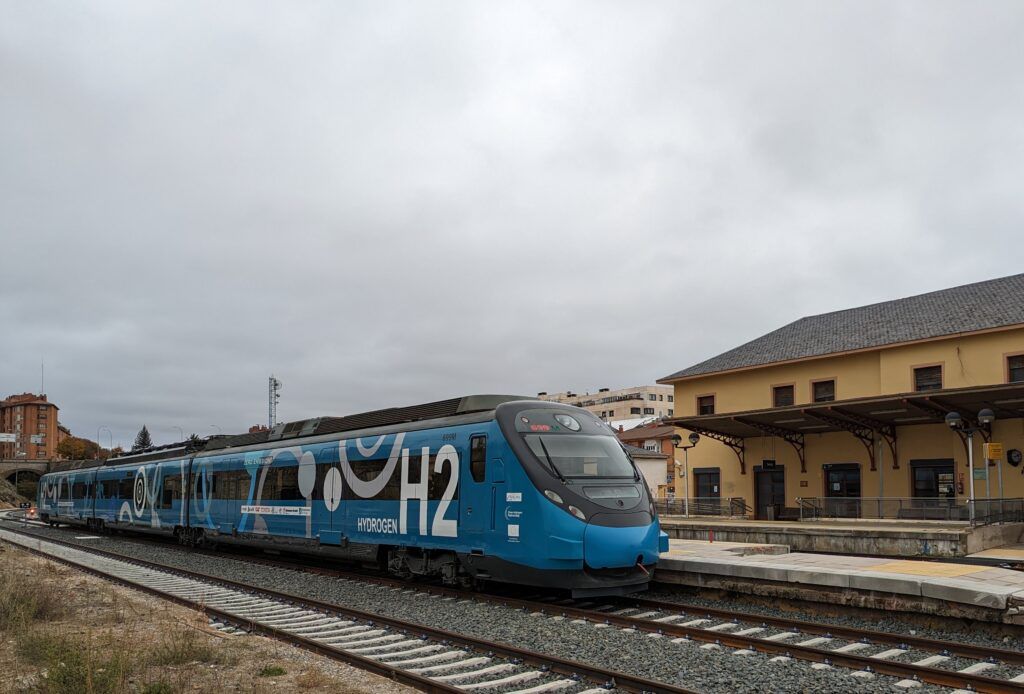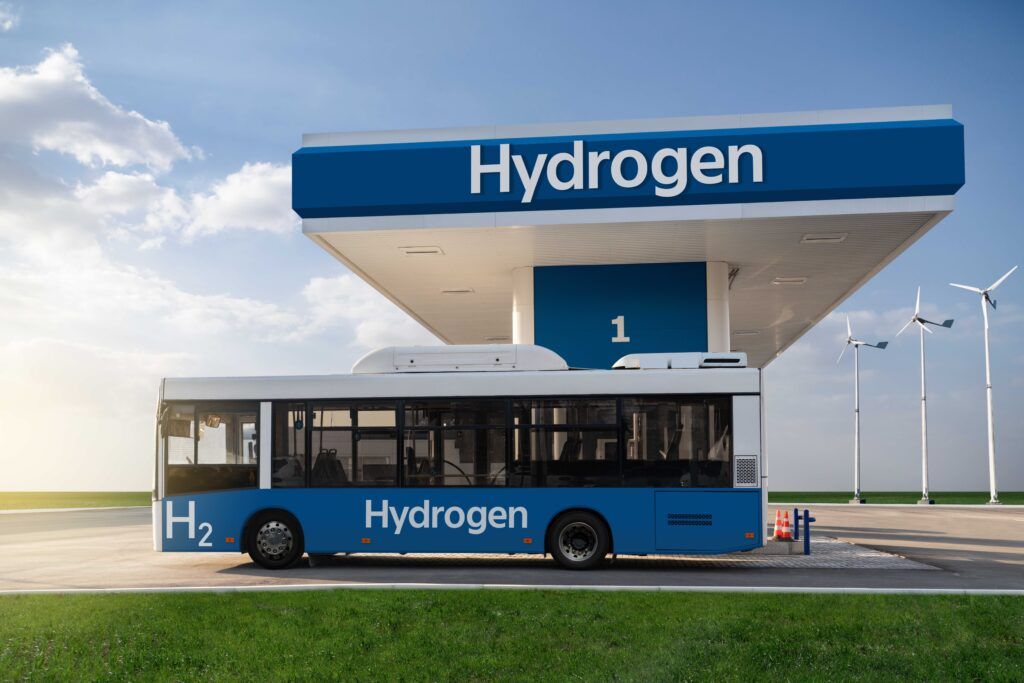
Is the future of the hydrogen train on track?
Hydrogen trains are a key proposal for the decarbonization of land transport and tests to analyze their feasibility are spreading around the world. Renfe is focusing on bimode system projects, in which trains can run on both electrified and hydrogen lines, although other companies, such as Germany's LNVG, prefer to opt for electrification only for the time being.
Hydrogen train expectations
In August 2023, the Ministry of Transport of Lower Saxony (Germany) and the state-owned company LNVG share a statemen which largely set the world's expectations for the push for hydrogen trains. The text indicated that the federal state will go for battery-electric trains rather than hydrogen trains, primarily for economic reasons.
The railway company Landesnahverkehrsgesellschaft Niedersachsen mbH (LNVG) aims to completely abandon its diesel-powered trains by 2037. To achieve this, it has conducted several studies to find the most efficient way to modernize its fleet. Among the options, the use of hydrogen-powered trains had been gaining weight, which in recent months were tested in the Lower Saxony region and found to be less cost-effective than electrification.
However, not all agents consider the option lost. From Renfe, for example, they are committed to continue advancing in their projects. "In the context of Germany, we believe that the caution is due more to being pioneers in this area than to doubts about whether hydrogen is profitable or viable," says Manel Villalante, general manager of Development and Strategy at Renfe.
"The hydrogen train presents itself as a promising option for sustainable mobility, but its success depends, to a large extent, on the expansion and improvement of energy sources to produce more affordable and environmentally friendly hydrogen," he adds. "Its viability is directly related to the availability and cost of production. To power a hydrogen train fleet, even if it is small, a significant amount is required, so it is imperative to boost and strengthen renewable energy sources and efficient ways to produce, store and supply green hydrogen to the vehicle."

The demonstrator train of the FCH2RAIL project, first hydrogen train to run in tests on the Spanish railway network, in Canfranc (ADIF)
Renfe's plans
Renfe is currently working to create a prototype vehicle that is both versatile and environmentally friendly. As happened in Germany, hydrogen is presented as an outstanding option, especially on lines with low train frequency and a small number of passengers.
"A hydrogen vehicle plays an important role on rail lines with such low passenger demand that electrification could be economically impractical. When passenger numbers do not justify the investment in electrification, hydrogen vehicles become a potentially viable alternative. These often more compact hydrogen trains can operate efficiently without the need for expensive electrical infrastructure," explains Villalante.
"On the other hand, we have the highly trafficked rail routes that are already electrified because of their cost-effectiveness. It is a question of finding a balance between the cost of electrification and the cost of modifying the material and operating it with hydrogen", adds Renfe's general manager of Development and Strategy.
With this principle in mind, Renfe's plans are to combine the two forms of energy and also to invest in hybridization. In recent years, Renfe has worked on several projects along these lines: one of them within the framework of the FCH2Rail consortium (Fuel Cell Hybrid Power Pack for Rail Applications) and another, more recently, in collaboration with the Institute for Energy Diversification and Saving (IDAE).

The Rende hydrogen train, during tests last November between Torralba and Soria (ADIF).
Projects with bimodo system
The FCH2Rail project is behind a bimode demonstrator train, powered by hydrogen and electricity, which made its first trip this summer on the line between Zaragoza and Canfranc. It is the first hydrogen train to make such a journey.
"This is an outstanding milestone, since the Canfranc line is particularly demanding due to its steep and high ramps, which pose a great challenge for the new power generation systems", Renfe said. "The demonstrator train has run both in electric mode, in the electrified area, and in hybrid mode, combining the energy coming from the hydrogen cells and the batteries, in the non-electrified sections."
The collaboration with IDAE, on the other hand, seeks to coordinate the project from a global perspective. "The main focus is on the adaptation of the train itself to the bimode system, but it also incorporates the challenge of liquid hydrogen production and its supply chain," Villalante explains.
"This approach compromises the development of a demonstrator vehicle that is not only hybrid, but also bimode', meaning that it can operate both on electrified lines by capturing energy from the catenary, as well as on non-electrified lines using the hydrogen system. From a mobility perspective, it allows it to run on different parts of the rail network, both electrified and non-electrified, giving greater flexibility to the system".
Currently, he points out, the project is in the process of preparing for intermediate tests, as a continuation of the initial ones carried out in Canfranc in May and June of this year. "In them we managed to achieve many of our objectives and we can confirm that we are immersed in the necessary tasks to start this new phase," adds Renfe's general manager of Development and Strategy.
PROJECTS AND DEVELOPMENTS OF THE CHINESE COMPANY CRRC WITH HYDROGEN AS FUEL
The future of the hydrogen train
According to Villalante, for hydrogen train development projects to succeed, it is critical that green hydrogen producers and refueling station managers are involved from the beginning. "It's a matter of looking at the whole system," he explains.
On the other hand, the difficulties encountered right now are related to the authorization and safety analysis processes, which are very demanding for the railway sector in order to avoid incidents. "To a large extent, these difficulties are due to the fact that there is not yet, although Europe and our State Agency are working on it, a regulatory and legal framework in the railway sector for the validation of this type of technology," he adds.
To make progress in achieving hydrogen trains, it is also necessary to make progress in improving the production, storage and supply of green hydrogen. "Of the 95 million tons of hydrogen consumed in the world last year, only 0.7% was green hydrogen," explains Villalante. There is also a need to improve aspects such as the durability of the elements and their performance.
"In a few years, we are sure that more environmentally friendly vehicles will be on the road. Whether they will be hydrogen, battery or other alternatives is difficult to predict," says Villalante.
Elsewhere in the world, several initiatives are also advancing. America's first hydrogen train began rolling this summer in Quebec, Canada. It made a series of test trips over several months between Montmorency Falls and Baie-Saint-Paun, a journey of about two and a half hours. This railroad (the same model used in Germany, Alstom's Coradia iLintTM) reaches a speed of 140 kilometers per hour and can carry up to 120 passengers.
On the other side of the world, China introduced the Ningdong hydrogen locomotive in the first half of 2023. According to the China Railway Rolling Stock Corporation (CRRC), it can reach speeds of up to 190 kilometers per hour and has an autonomy of two hours.
In addition, CRRC has announced that the first hydrogen-powered autonomous rapid transit rail system (ART) has begun a three-month pilot test in Malaysia. Meanwhile, India's Northern Railway (GM) has announced that its own hydrogen trains will begin operating between Jind and Sonipat in 2024.
ALSTOM'S CORADIA ILINT WAS ONE OF THE FIRST HYDROGEN TRAINS TO BE PUT TO THE TEST
The heads and tails of buses and trucks
The case is quite different for hydrogen-powered buses, which are already becoming commonplace in the urban fleets of some European cities. Those of the Solaris company, for example, can cover up to 350 kilometers with a single charge that takes just a few minutes.
Bologna and Venice (in Italy) and Cologne (in Germany) are some of the cities that already have Solaris hydrogen-powered city buses among their fleets. Their presence represents a further step forward in the decarbonization of land transport, in addition to the advances that are also taking place in the maritime sector.
However, the initiative that sought to electrify heavy road transport has not been as successful. That is, using catenary-powered hybrid truck systems. In this case, the need to create a very large infrastructure was one of the impediments to the development of this technology.

Hydrogen-powered buses are commonplace in cities, but have not had the same success on intercity routes (Gettyimages).


